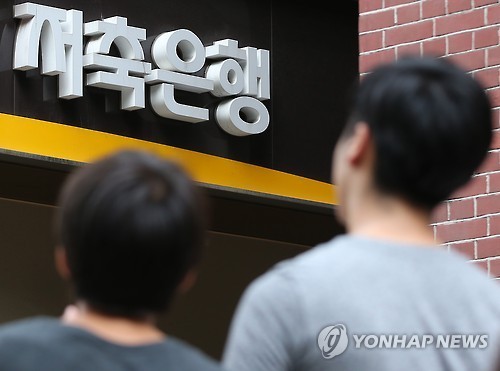Korea is moving to encourage local banks to lend more to mid-credit borrowers, a segment typically underserved in Korea’s retail loan market, polarized between cheap, but hard-to-get, bank loans and expensive nonbank loans.
According to industry sources and multiple local reports, the Financial Services Commission is currently devising measures to bolster retail banks’ middle-market lending, with its sights set on borrowers with credit scores just below levels that would qualify them for a bank loan. It wants to see banks develop loan products for them, particularly no-collateral personal loans with interest rates around 10 percent.
 |
(Yonhap) |
The measures, expected to be announced later this month, may involve state-run Seoul Guarantee Insurance to cover the envisioned loans, the reports said.
Currently, Korean banks such as KB Kookmin, Shinhan, Woori and KEB Hana issue unsecured personal loans to borrowers with credit grades between a score of 1 and 4 in a scale of 10. Interest rates charged range between 3 percent and 6 percent.
Savings banks or nonbank lending institutions cater to those with credit grades from 6 to 10 and charge them interest of between 15 percent and 34.9 percent. But their primary business is the high-risk, high-interest loans for the lowest credit group. A law setting the 34.9 percent cap on rates expired with the start of 2016 due to a parliamentary bungle, but the government is now pushing for its reinstatement.
This leaves people with a middle level of credit in the lurch. A key hindrance to increasing the provision of mid-interest rate loans for this segment of borrowers, experts say, is the difficulty of creditworthiness analysis. Previous attempts by major lenders to target the middle market have failed due to high default rates.
According to Woori Bank’s research arm, loans extended by banks and nonbank lenders to individuals with credit grades of 5 and 6 totaled 52 trillion won ($43.4 billion) as of September 2015. Of that, 58 percent was lent by nonbank institutions.
By Lee Sun-young (
milaya@heraldcorp.com)








![[Today’s K-pop] Blackpink’s Jennie, Lisa invited to Coachella as solo acts](http://res.heraldm.com/phpwas/restmb_idxmake.php?idx=644&simg=/content/image/2024/11/21/20241121050099_0.jpg)